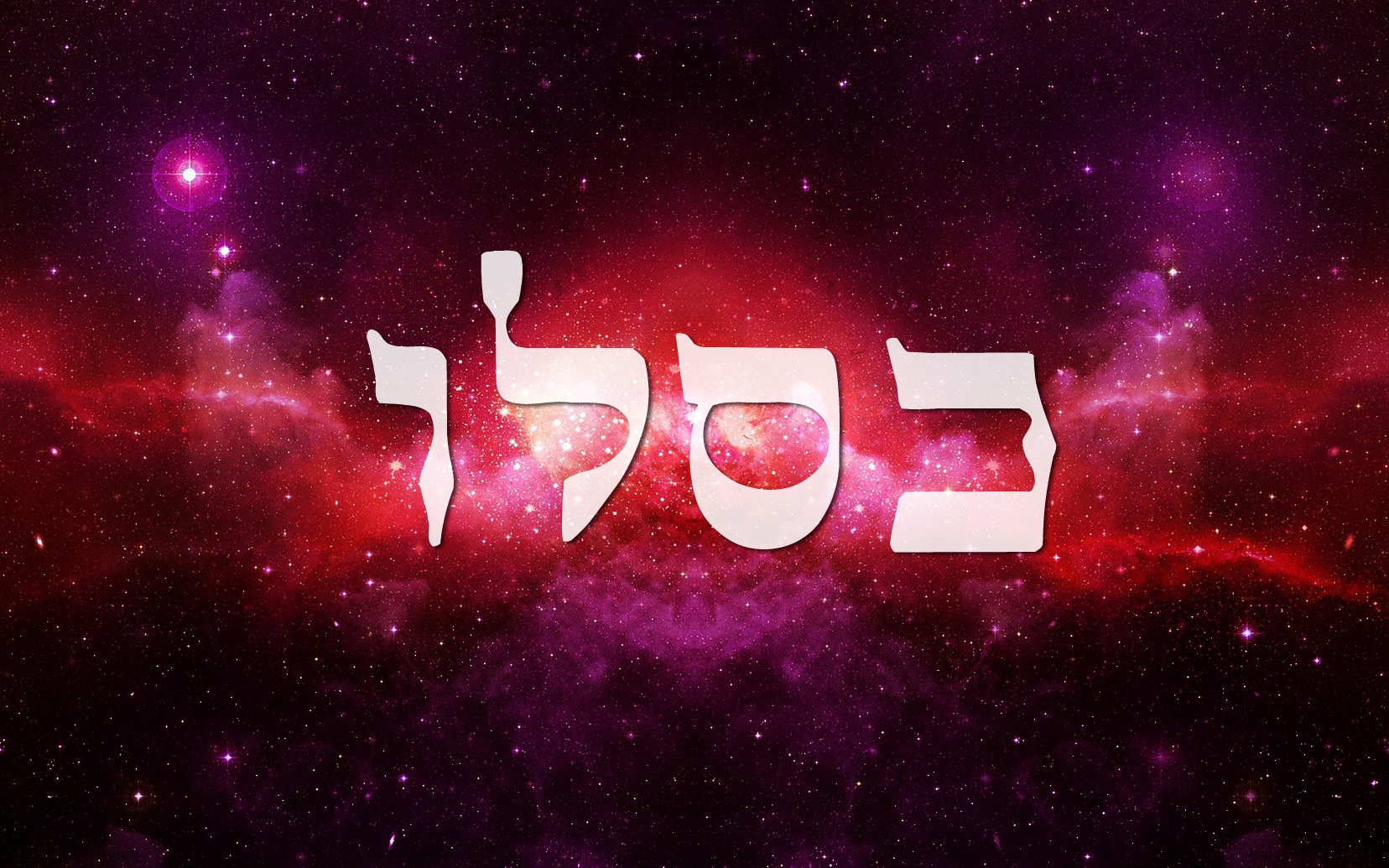Two Souls, Two Hearts, and Two Bodies
Many people are confused about the soul. Is the soul part of the body, the mind, or the heart? Even more confusion manifests when the Spirit is added. Where do all these aspects fall in place or relate to each other?
Based on the Scriptures and research, there is evidence for two souls, two hearts, and two bodies, as well as the separate Spirit. Understanding comes from revealing the Hebrew words used in the Scriptures and other material.
The first Hebrew word for soul would be n’shamah נְשָׁמַה . “I thank You in Your presence, King of life and endurance, for You have returned within me my soul in mercy. Great is Your faithfulness.” This Hebrew prayer is spoken to YaHVaH upon waking up each morning and thanks Him for returning the person’s soul, n’shamah.
Strong’s defines n’shamah (5397), used in the Bible 24 times, as: “breath(17x), blast(3x), spirit(2x), inspiration(1x), souls(1x)” (Hebrew dictionary §, p. 193). Interestingly, the book says the word comes from the root word nasham, meaning to blow away. This is highly doubtful because the n’ at the beginning is representative of a Hebrew prefix. More likely, the root word is shamah, meaning air or heaven, which could correlate to the spirit or breath of n’shamah.
Another Hebrew prayer reads:
Elohai, the soul (n’shamah) You placed in me is pure. You created it, You fashioned it, You breathed it into me, and You preserve it within me, and You will take it from me, and henceforth restore it to me in the time to come. All the time that the soul (n’shamah) is within me, I give thanks in Your presence, YaHVaH Elohai and Elohai of my fathers, Master of all creation, Adon of all the souls (n’shamah). Blessed are You YaHVaH, the restorer of souls (n’shamah) to those who have been asleep.
Notice the underlined portion, breathed it into me. The prayers and definitions clearly show this soul, n’shamah, is a spiritual soul. Some people would agree YaHVaH breathed in His Spirit, yet the Scriptures say soul, a spiritual soul. Genesis 2:7 reads, “And YaHVaH Elohiym formed the man (Adam) of dust from the ground, and He blew into his nostrils the soul (n’shamah) of life (or lives); and became the man (Adam) with a living soul (nephesh)” (Literal translation by me from the Hebrew).
What’s this word nephesh, a different soul? Yes. There are two souls listed in the Scriptures. Nephesh, however, represents a physical soul, and it is used 753 times in the Scriptures, and most commonly translated as soul, 475 times. However, nephesh is also translated as: “life(117x), person(29x), mind(15x), creature(9x), body(8x),” according to Strong’s Hebrew dictionary §, p. 189. From the same source, the expanded definition reads:
Nephesh means soul; self; life; person; heart . . . (1c) The best Biblical definition is found in Ps. 103:1 where nephesh is defined as “all that is within” a person . . . (2) It is translated “soul” which makes sense in most passages. All other English translations, in the particular context, are stressing some aspect of the soul. (3) The Hebrew system of thought does not include the oppositions of the terms “body” and “soul,” . . . (3a) The Hebrew compares/contrasts “the inner self” and “the outer appearance” . . . (3c) The inner person is nephesh, while the outer person . . . is shem . . .
By these definitions, nephesh must be a physical soul, a part of the physical body on the inside. Where would this physical soul be located? The word is translated mind, heart, and body sometimes, so is this soul located in them? The answer is yes and no. Turn to the Scriptures for the answer. In the KJV, Lev. 17:11 reads, “For the life of the flesh is in the blood . . .” (Underlined word my emphasis). The underlined word is nephesh in the Hebrew, part of the 117 times it is translated as life. Replace life with soul as in the Tanach rendering, “For the soul [nephesh] of the flesh is in the blood and I have assigned it for you upon the Altar to provide atonement for your souls [nephesh]; for it is the blood that atones for the soul [nephesh].” Interestingly, the last two nephesh words are also translated as soul in the KJV. Why not the first one? To hide the fact that within the blood resides your physical soul.
Does this explanation sound crazy? Remember the above definitions about ‘all that is within?’ What is all within our bodies, if not our blood? OK, it does sound somewhat hollow until the root word for nephesh is researched. The rood word is naphash, which means “to breathe; respire; be refreshed” (Strong’s Hebrew dictionary §, p. 189). What is our blood’s purpose? The purpose is to carry the oxygen we breathe into our body.
We have a physical soul, nephesh, in our blood and a spiritual soul, n’shamah, which YaHVaH breathed into us and returns to Him as He pleases. The heart, mind, and body are part of the physical soul because they are pumped by, filled with, and nourished by the blood. Nephesh should be translated as soul in every case. Not life, because Hebrew for life is Chai, חַי. Not body, mind, or heart, because they are also different Hebrew words.
The Hebrew word for heart is lev or levav. Although the word can refer to the heart that pumps our blood, the word’s true and most widely used meaning in Scripture refers to the motives, feelings, affections, and desires of man. The usage is not for the organ inside our chest, so much as the inner mind of a person. The center of our minds is where these aspects of our character can be found. The New Testament carries this same context across when it reads, “For out of the heart proceed evil thoughts,” (Mt. 15:19, KJV). We know this is not our blood pumping heart because it does not think. Only our mind thinks and can devise plans for evil.
We have a physical heart, which pumps blood, and a mind-based heart, where our emotions and desires come from.
Our bodies produce and guide our feelings, which in turn drive our emotions and desires in our mind-based heart. This physical body we inhabit is made of flesh, basar in Hebrew. Our body contains our strength through our muscles, our thoughts through our mind and mind-based heart, and our physical soul through our blood. Phil. 3:20-21, “For our conversation [citizenship] is in heaven, whence also we look for the Savior, the [Master Yahoshua the Messiah], who shall change our vile body that it may be fashioned like unto His glorious body . . .” and Heb. 10:5, “. . . but a body hast Thou prepared me . . .” (KJV) clearly shows a second, more glorious body awaits us in heaven. We do not possess this second body yet, but we will because YaHVaH loves us and we believe in His Son, Yahoshua (Yeshua).
We are also to love YaHVaH. How are we to Love Him? “With all your heart [levav, mind-based heart], and with all your soul [nephesh, physical soul in the blood], and with all your might [body strength]” (Deut. 6:5, KJV). Notice all three are physical, as shown previously above. The Words of Yahoshua (Yeshua) say the same thing in Mark 12:30, plus He adds the mind (dianoia). This word represents the mind in deep thought or of understanding, in example the intellect. The Messiah adding the mind shows loving with the heart (emotions, feelings, and desires in the mind) is not enough if our understanding mind (intellect) does not accompany the heart. Other Scriptures mention serving YaHVaH with all the heart and all the soul, in addition to loving Him. Still others mention seeking Him with all our heart.
The confusion of the usage of the word soul becomes apparent in both English and Greek. Both languages use the word to represent both the physical soul and spiritual soul; whereas, the Hebrew clearly separates two souls: N’shamah – spiritual and Nephesh – physical. Our physical soul (nephesh) must be brought to serve and love YaHVaH. Our spiritual soul (n’shamah) already knows how to serve and love Him.
Two souls, two hearts, and two bodies are all made for glorifying YaHVaH.
References:
Bible. King James Version.
Scherman, Rabbi Nosson, ed., et al. Artscroll Series/Stone Edition. The Tanach. Student size ed. Brooklyn, NY: Mesorah, 1998. Commentary on 184, 185, 192. Hebrew text used for translation purposes.
Strong, James, LL.D., S.T.D. 1822-1894. The New Strong’s Expanded Exhaustive Concordance of the Bible. Red-letter edition. Nashville, TN: Thomas Nelson. 2001. ISBN 0-7852-4539-1. Greek Dictionary § p. 13, 254, 255, 258. Contains Expanded Hebrew and Greek dictionaries with Additional definitions from other reference sources, such as Vine’s, Brown-Driver-Brigg’s, and Thayer’s.
First published 7-2008, © 2008, 2018 Min. Dr. Donald H. Garrett and Odon Obadyah Ministries, Inc.
Return to Articles by Min. Garrett







